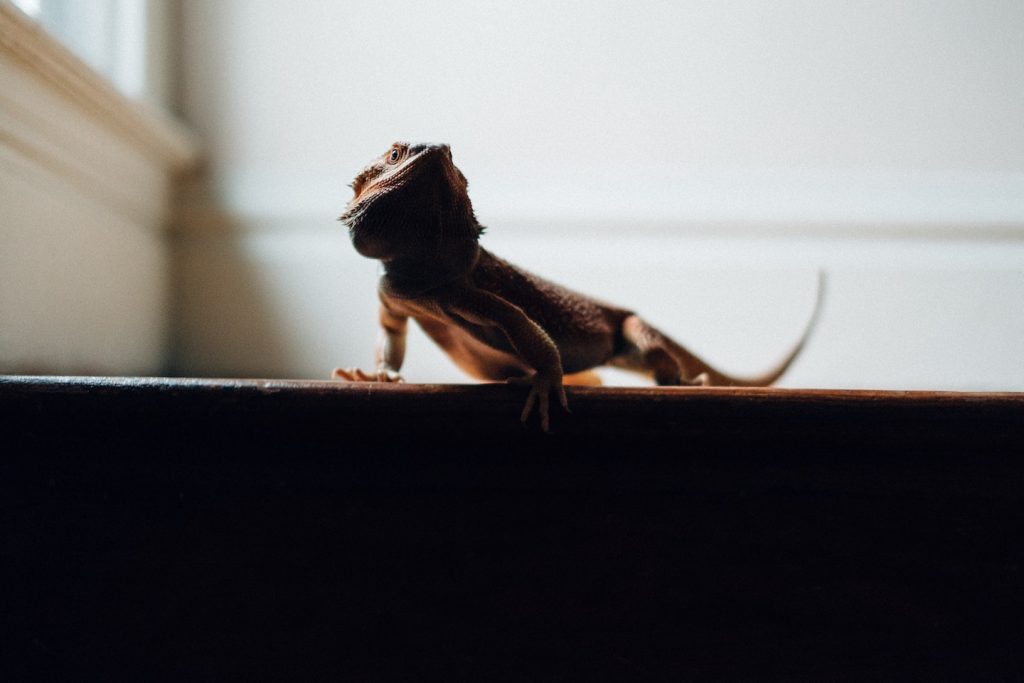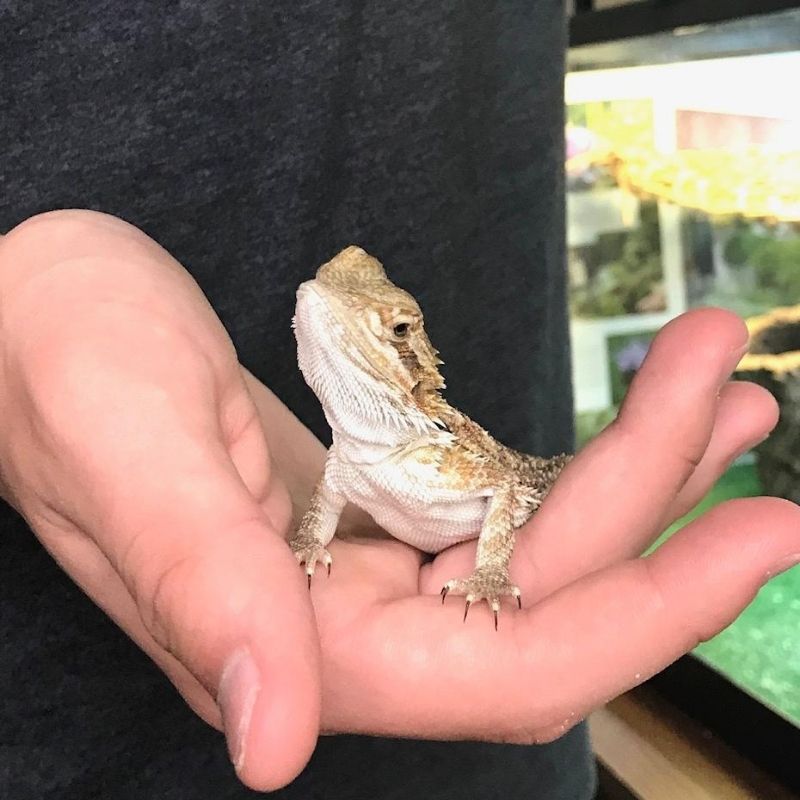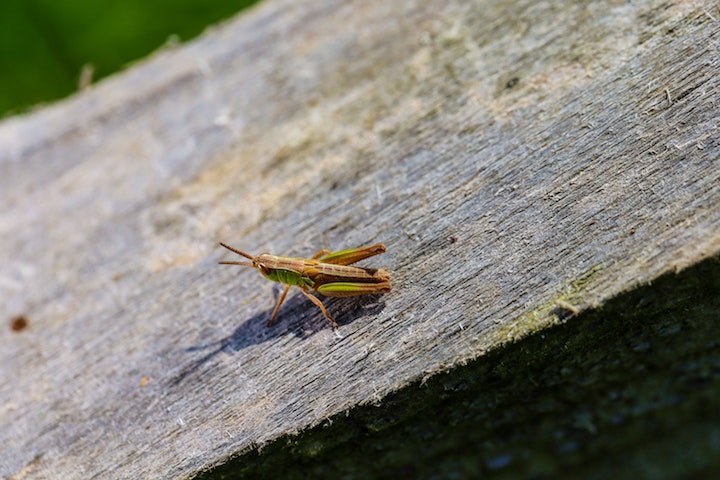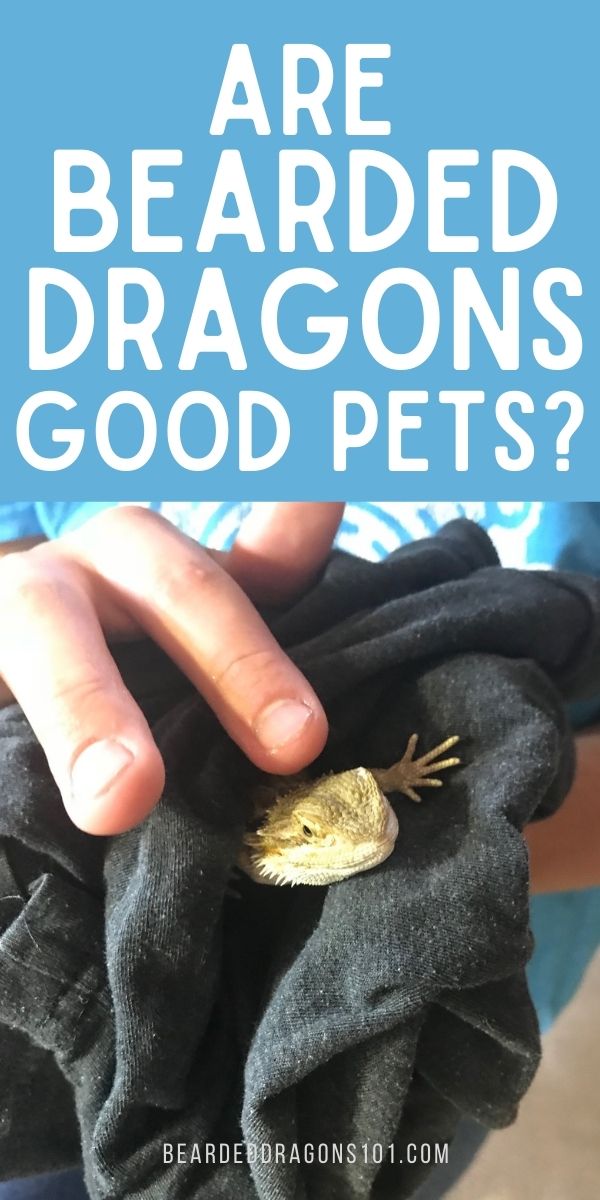
When we first ventured into the world of bearded dragon ownership, I remember asking someone, “Are bearded dragons good pets?” They replied with a rather passionate yes — as most beardie owners do — but they left out some important details we wish we’d known. Keep in mind, we hadn’t owned reptiles before, and didn’t have a clue about what it was like to care for a beardie as a pet. Here are a few things I wish they’d explained to us in the beginning.
Do bearded dragons make good pets? In short, yes, but there are several complex things you should know before bringing a beardie into your home, such as: 1) the costs of having a bearded dragon as a pet, 2) the special food, supplements, and lighting they’ll need to thrive in your home, and 3) what kind of home environment they’ll need to be comfortable.
Are Bearded Dragons Good Pets?
What is a Bearded Dragon?
Bearded dragons, affectionately called beardies by many, are reptiles native to Australia. In recent years, beardies have become quite popular as pets. They can have multiple color variations (but are often brown), have a tail as long as its body, and sport a spiky “beard” under their neck area. This beard turns black and expands when they’re angry or sense they’re in danger.
Bearded Dragon Pros & Cons
Pros:
- As far as scaly creatures go, they’re adorable.
- As long as you’re nice to them, they’re friendly.
- They have a great temperament and are great with kids.
- They’re small and don’t take up a lot of space.
- They don’t need constant attention.
- They tolerate (and maybe even enjoy) being held and petted.
- They’re awake during the day and sleep at night.
- They don’t get much bigger than two feet long, and half of that is their tail.
- Beardies can live 8-10 years, so you’ll be able to enjoy them for a good length of time.
- They won’t chew up your shoes or furniture.
Cons:
- You’ll need to make frequent trips to the pet store to buy bugs and worms for them to eat, especially while your bearded dragon is young.
- The bugs and worms can get a little expensive for some families. This tapers off as the beardie gets older, when they’ll transition to eating less meat but more green salads.
- They require special lighting to mimic the sun and its UVA/UVB rays. Some of these bulbs and fixtures can be surprisingly expensive. For example, one mercury vapor bulb like this can easily cost $50 or more.
- If you travel often, you’ll probably need to find a friend to look after your beardie. It’s not likely you’ll be able to drop them off at a pet boarding facility for the week, as you would for your canine companion.
Are Bearded Dragons Friendly?
Yes, bearded dragons are friendly. As a matter of fact, that’s what first drew us to them as we were walking through a pet store one day. A baby beardie was peering through the glass of its enclosure, waving its little arm at anyone who would pass by. Since then, we learned that beardies will wave their arm as a sign of submission or peace. It’s one way of saying, “Hey there! I’m not a threat! I’m nice!” to us humans as well as other animals.
Are Bearded Dragons Good With Kids?
If you have children at home, teach them how to be gentle with a small pet. Visit a pet store or reptile center near you and see if your family can hold or handle a beardie while supervised by an employee.
Bearded Dragons make great pets for kids, provided the child is supervised and understands how to handle small animals. You must take the time to teach them. Beardies like to feel safe, so children need to know to be calm with them and respectful towards them.

What Do Bearded Dragons Eat?
If you decide to welcome a young beardie into your home, they’ll need lots of bugs and worms, which you can find at a local pet store or order online… just be sure to choose a quality supplier. Please note, the food can pretty somewhat expensive while they’re young, but it tapers off as they grow. It wouldn’t be uncommon for your young beardie to eat 50-100 small crickets every day!

Often, one of the first things you’ll feed them are small sized crickets. Offer them one at a time. There are two things to remember when you do this:
- The crickets shouldn’t be any larger than the space between your bearded dragon’s eyes, and
- Don’t let crickets run free in your bearded dragon’s terrarium (they can really terrorize your beardie, especially at night).
You’ll also want to try other options with your beardie, such as superworms, hornworms, mealworms, or dubia roaches.
Because they can be prone to vitamin deficiencies when kept as pets, any bugs or worms that you feed your beardie will need to be dusted with calcium supplements (like this one) and sometimes multivitamin supplements. Metabolic Bone Disease (MBD) can easily effect bearded dragons’ bone growth, so using a calcium supplement is crucial.
Besides bugs and worms, you’ll also want to keep a small dish in their terrarium for salad. Try filling it with small pieces of cabbage, bok choy, or other leafy greens. As your bearded dragon gets older, they’ll eat more of their salad and fewer bugs. They should always have a small salad available, so plan to keep it fresh by changing it out daily.
Some feeding supplies we recommend keeping on hand if you’re bringing a beardie home are feeding tongs, a water dish that can also be used for soaking, and a salad dish.
Housing a Bearded Dragon
Beardies need their own “cage” or space, and it’s often called a terrarium (although vivarium is really the more accurate word). You may choose to start with something very basic, such as converting a 40 gallon aquarium into your baby beardie’s home. Keep in mind that 40 gallons is the SMALLEST size tank you should use, and some experts say even that might be too small. You’ll definitely want something bigger as your beardie grows.
Ideally, planning to welcome your beardie home into something like this ReptiZoo terrarium would be ideal. It has doors that slide open in the front so you can easily access your new pet. Beardies don’t seem to prefer a home that opens from the top. It tends to startle them when someone reaches in to say hello, feed them, etc.
Remember, their housing will require you mount special lighting to mimic the sun and it’s UVA/UVB rays. Some of these bulbs and fixtures can be surprisingly expensive. For example, one mercury vapor bulb like this can easily cost $50 or more, and needs to be replaced annually. It’s all part of the costs associated with having a bearded dragon as a pet. Just be sure to budget accordingly.
Summary
In summary, yes, bearded dragons make great pets, but be sure to research and ask lots of questions about lighting, feeding, and care. You’ll want to have a basic understanding of these items — and the costs associated with them — before bringing your beardie home. Set aside some extra money for the startup supplies you’ll need. If you do these things, you’ll enjoy owning and caring for your very own bearded dragon!
You might also like: Ultimate List of the Best Bearded Dragon Names

